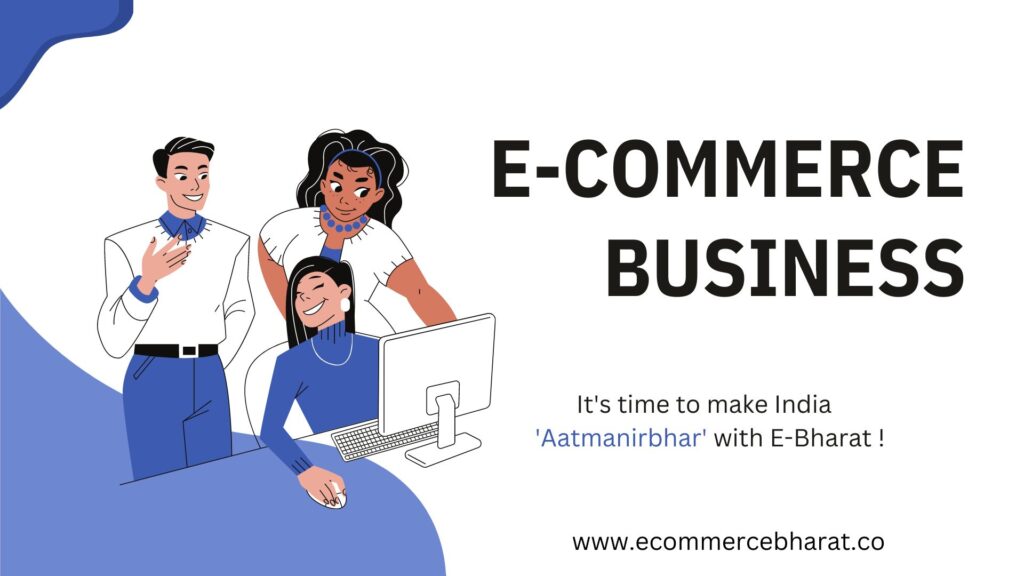
Overview Of E-commerce Activities In India
Before getting into How to start E-commerce business in India we should have a look at the history of e-commerce in India. E-commerce platforms entered India in post internet era (1990s), but it was the 2016 when India saw surge in digital transactions. (After internet price decrease in 2016) One of the pioneering companies in this field was Fabmart.com, which rebranded as Indiaplaza.co later. Another notable early player was eBay India, which started its operations in 2000. However, the real boom in online shopping in India came with the advent of Flipkart in 2007.
From India’s e-commerce sector had experienced significant growth, driven by factors such as increasing internet penetration, rising smartphone usage, and the expanding middle class.
Government Initiatives to Encourage E-Commerce Activities In India
The Indian Government has been working towards enhancing the e-commerce activities penetration in Indian economy by promoting technologies such as UPI, RuPay, DigiLocker, eKYC, etc. After this Indian e-commerce transaction increased to 76%. Because of these initiatives Indian Government now can invest in broadband services in rural India which would add up new online consumers and increase more online transactions.
Indian government also took some important steps By replacing the consumer act 1986 to 2019, here government ensured that consumer must be protected from any kind of theft, misinformation of the product happens online by the seller or any person responsible for the product. This ensured Indian consumers to involve more in transactions that happens online. These points are enough to make people convinced to be involved in start E-commerce Business In India.

Benefits to Start E-Commerce Business In India
There are Several benefits to Start an online e-commerce business in India. And these are as follows :-
1) Low Entry Barrier — Setting up an e-commerce business typically requires lower startup costs, that’s why in comparison to the Conventional selling business it is more convenient to sell start an online business in India.
2) Global Reach – Amazon, Meesho, etc has customer base around the world and anyone sitting anywhere in the world can buy the product of their choice.
3) 24/7 Availability of the products – the products available on e-commerce platforms are listed for consumers so they can purchase them anytime they feel comfortable.
4) Online Business From Home — E-commerce selling can be started at the comfort of your home. Because Products are listed on various platforms available to the buyers to avail, however, sellers are supposed to have a place for the inventory though.
5) Information of the product– Now, because products are listed online a customer can gather as much information about the product as he can, he just need to put model number on the internet.
How to Start E-Commerce Business In India

1) Market Research and Niche Selection— It is most important to do Market Research for the product you are intent to sell on online platforms. Also you must be very clear about the product categories you would like to put on sale.
2) Choose your niche– After researching about the market you would like to reach, your second agenda is to choose the product categories as per your either requirement or simply categories you like.
3) Business Planning— You should develop a detailed business plan mentioning your business goals and objectives, target market, product categories, pricing strategy, marketing plans, and financial projections.
4) Legal and Regulatory Compliance– Register your business and obtain any necessary licenses or permits required to operate an e-commerce business in India.
5) Choose an E-commerce Platform—There are many platforms available for the you to list your products on, these platforms includes Amazon, Meesho, Flipkart, Myntra, etc.
6) Inventory Management— Set up efficient inventory management systems to track stock levels, manage orders, and prevent stock-outs or overstocking.
7) Monitor and Analyze Performance– Use analytic tools and metrics to track the performance of your e-commerce business, including sales, traffic, conversion rates, customer acquisition costs, and customer lifetime value.
Responsibilities as an E-Commerce Business Owner

1.Prepare Strategies– Because the owner of the online shop is the sole employee in the organization (in the few first months), he is responsible to do every foundational activities himself. Business strategies has to be made before the commencement of the business itself.
2.Customer Retention– Customer Retention means a companies ability to turn the customer into repeat buyers and prevent them from turning to any competitor in the market.
3.Budget Management– Because the e-commerce business is a sole proprietor business one has to manage the required budget on his own.
4.Meet revenue targets– It is the responsibility of the business owner to ensure the targeted revenue or the profits coming to the business. There are several other ways to manage profits other than making profits by selling products. And these are:-
Decreasing Customer Acquisition Costs
Implementing Best Pricing Strategy
Reduce Ratio of Product Return
Use Of Automation or Artificial Intelligence
Optimize your Supply Chain
Conclusion
The points mentioned above are intended to clear the basic concept of the E-Commerce in the mind of beginner seller on the different different platforms and have you well verse in the field of E-Commerce business through data published by the respected authority of the Indian government. Our Main intention is to just put statistical facts in front you related to E-Commerce.
If you like this blog of ours then you might like another one “How To Increase Profitability of E-commerce business” in this blog you would find better ways you can increase your income from e-commerce business.
